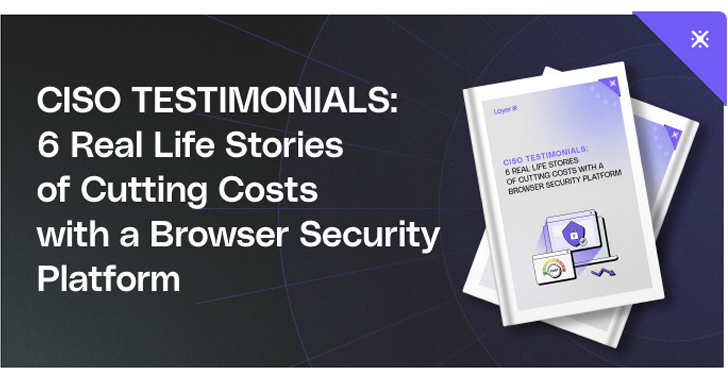Browser security is becoming increasingly popular, as organizations understand the need to protect at the point of risk – the browser. Network and endpoint solutions are limited in their ability to protect from web-borne threats like phishing websites or malicious browser extensions. They also do not protect from internal data exfiltration, like employees pasting sensitive data to ChatGPT. As it turns out, browser security is also a cost-effective security solution, compared to other solutions that require much more budgets and heavy lifting. In a new report, “CISO Testimonials: 6 Real Life Stories of Cutting Costs with a Browser Security Platform”, six CISOs testify how browser security allowed them to reduce security team workloads and enhance efficiency and security, with a cost-effective browser security solution.
CISO Testimonials
Throughout the report, the CISOs reveal the tasks they had on their plate and how they solved them in an efficient manner. These are categorized to six use cases:
- SaaS data protection – Securing corporate data on SaaS and web apps
- Browser security posture – Securing the browser app
- Browser threat protection – Preventing users from accessing phishing or other malicious web pages
- User awareness and training – Preventing users from performing risky and insecure activities in their browsers
- Zero trust access from unmanaged devices – Securing internal and external workforce access to corporate SaaS from non-corporate devices
- Incident response and investigation – Conducting rapid and efficient investigation of detected threats
From Complexity to Granular Simplicity
One organization, struggling with the complexity of protecting data across SaaS applications from exfiltration and leaks, transitioned from maintenance-heavy CASB and agent-based DLP solutions to LayerX. The result? A dramatic reduction in TCO and granular protection down to text typing and form filling within the browser.
Another CISO highlighted the challenges of managing browser security, including keeping browser versions up-to-date and preventing malicious extensions, across both managed and unmanaged devices. With LayerX, they now enjoy a comprehensive view of browser versions, users, and profiles, automating the detection and prevention of security weaknesses.
“LayerX enabled us to obtain, in a single click, what otherwise entailed painstaking effort or was downright impossible. LayerX’s screen provides us with visibility into all facets of our browsers’ security posture – versions, users, and profiles. We’ve configured policies that hunt for any security weakness and alert us for immediate resolution, as well as policies that prevent such weaknesses to occur at all – for example prevention of malicious extensions. We have visibility into any event that our users are performing in their browsers, including the internal and external workforce that use unmanaged devices. And it’s all, literally, off the shelf to start using,” he said.
Recognizing the importance of the human element in security, one organization shifted from traditional training methods to real-time notifications through LayerX. This proactive approach has proven far more effective in preventing risky browser activities.
Read all testimonials and use cases, in the CISO’s own words, in the report.
